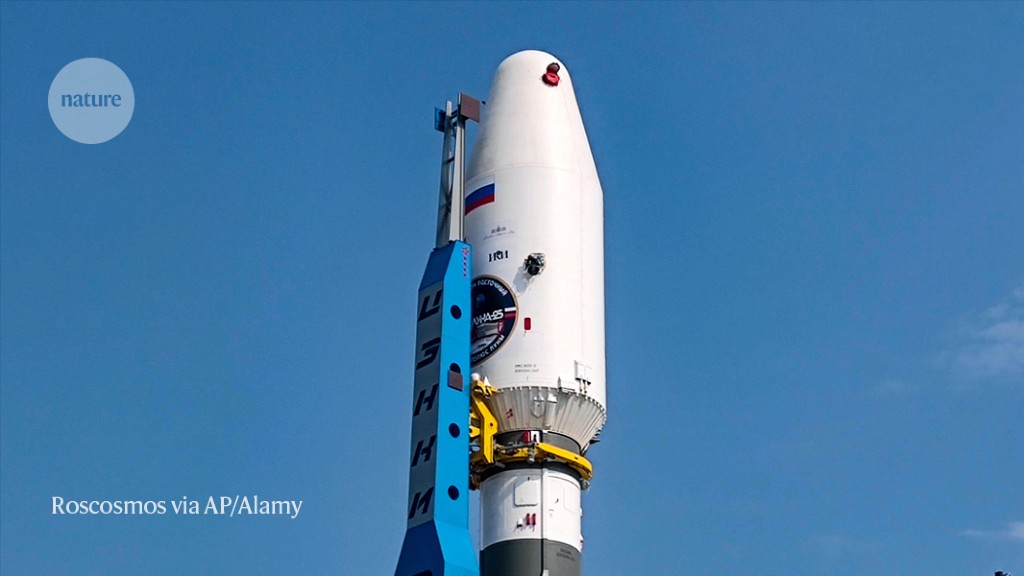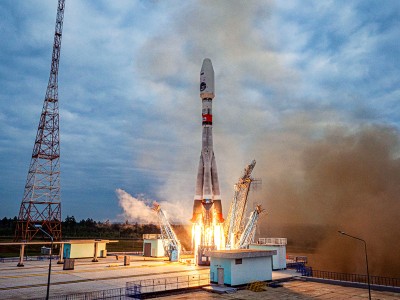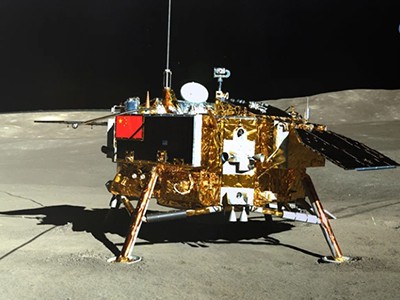
Luna 25 was launched atop a Soyuz rocket from Vostochny Cosmodrome in eastern Russia.Credit: Roscosmos State Space Corporation via AP/Alamy
Russia says its Luna 25 spacecraft has crashed into the surface of the Moon during preparations to attempt a landing at the lunar south pole. “It’s hugely disappointing,” says Simeon Barber, a planetary scientist at the Open University in Milton Keynes, UK. “It highlights that landing on the moon is not easy.”
The uncrewed spacecraft blasted off from the Vostochny Cosmodrome in eastern Russia on 10 August. It was the country’s first mission to the Moon since Luna 24, in 1976. The goal was to touch down at the 100-kilometre-wide Boguslawsky crater near the south pole, which would have made Russia the first country to land a craft in this location.
Russia launches first Moon mission in half a century: what it means for science
But on 19 August, the Russian space agency Roscosmos announced on the social media network Telegram that “communication with the Luna 25 spacecraft was interrupted”, after a command was sent to the craft to lower its orbit around the Moon. Attempts to contact the craft on 20 August were unsuccessful, leading Roscosmos to determine that Luna 25 had “ceased to exist as a result of a collision with the lunar surface”.
The mission’s failure will be a huge loss to Russia’s space ambitions, says Bleddyn Bowen, a space-policy specialist at the University of Leicester, UK. “It’s just the most spectacular example of the problems that have plagued the Russian space sector for many years now,” he adds. “I don’t know how they’re going to come back from this.”
Searching for ice
If Luna 25 had landed successfully, the spacecraft would have used various instruments, including a robotic arm, to dig up to 50 centimetres into the lunar surface in search of water ice — thought to be abundant at the Moon’s south pole and a potential resource for future missions.
The stationary lander was designed to last for up to 12 months on the surface, which could have revealed possible changes in “frost on the surface of the Moon”, says Barber, who was part of a European collaboration with Russia on lunar missions that ended last year, following Russia’s invasion of Ukraine. “We do think there is an active water cycle on the Moon today, with water molecules being trapped in cold places.”
Moon mission failure: why is it so hard to pull off a lunar landing?
Luna 25’s landing was scheduled just ahead of another attempt to touch down at the Moon’s south pole, by India’s Chandrayaan-3 spacecraft, which will try to do so on 23 August. The vehicle is currently searching for an opportune landing spot from lunar orbit. “If they succeed, it would be quite a demonstration of how India can do lunar [missions] in a way Russia can’t,” says Bowen.
NASA also hopes to land equipment at the Moon’s south pole later this year, hitching a ride with the IM-1 mission of Intuitive Machines, a firm based in Houston, Texas. Other uncrewed US moon landings are planned ahead of the return of US astronauts to the moon later this decade. China, too, has set its sights on the lunar south pole, having already landed on the Moon’s far side for the first time and returned samples from the Moon in recent years.
Russia still has two more Moon missions in the works, the Luna 26 orbiter and Luna 27 lander, but the status of those missions is unclear following Luna 25’s failure. “It’s inevitably going to push back the programme,” says Christopher Newman, who researches space law and policy at Northumbria University in Newcastle, UK. But he adds that it would be a “surprise” if those missions don’t go ahead, because Russia continues to try to demonstrate its space prowess.
“This was clearly an attempt to re-establish Russia as a dominant space power,” says Newman. “It will bite deeply into their confidence that they haven’t done that.”









More News
Author Correction: Stepwise activation of a metabotropic glutamate receptor – Nature
Changing rainforest to plantations shifts tropical food webs
Streamlined skull helps foxes take a nosedive